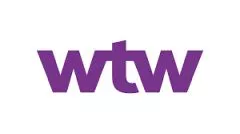What are the potential risks associated with your employees using personally owned vehicles for business use and how can you manage them effectively?
The use of employee-owned vehicles is increasingly common and convenient for many business. But so-called 'grey fleets' and 'occasional business use' of personal vehicles by your employees introduces a range of potential risks you'll need to understand and mitigate to ensure employee safety and business compliance.
Below, we consider the risks associated with employees using their own vehicles on company business and the measures you can take to mitigate them.
Defining grey fleet and occasional business use
The term 'grey fleet' refers to vehicles owned by employees but used for business purposes. This can encompass a range of activities, such as traveling to training courses, visiting clients, or attending company events. Although these vehicles aren't part of the company's official fleet, their use for business activities imposes certain responsibilities and liabilities on you as the employer.
Insurers define occasional business use (OBU) where a job requires an employee to use their own vehicle for work purposes, but with limited mileage per annum per driver, typically 1,000 to 1,500 miles (limits vary between insurers). Using a vehicle to commute to the main office doesn't count as work or part of a job, it's what lies outside of this commute that's covered by OBU. For example, if your employee is commuting to not just your main office but also external meetings and errands, insurers would typically consider this OBU.
The challenge is to distinguish between personal and business use. 'Personal use' is typically defined as social, domestic and pleasure activities. While personal motor insurers often cover commuting to and from the usual or permanent place of business, the specifics can vary. Beyond this definition, there's no insurance coverage for a vehicle when used for OBU, potentially opening a gap you must address to ensure compliance and the protection of your people and business.
Risks and responsibilities of grey fleets and occasional business use
One of the primary concerns with grey fleet vehicles is ensuring there's appropriate insurance coverage. Your company policy should state clearly that any employee who drives on company business should have an OBU extension on their personal insurance policy.
Standard personal car insurance policies may not cover this additional business use, which can leave both the employee and you exposed in the event of an accident. As an employer, you have a duty of care and must ensure your employee is fully insured before driving for work, with at least a 'Class 1' business use coverage on their motor insurance policy (see box for definitions).
The three primary classes of business-use motor insurance
- Class 1 insurance provides coverage for driving between multiple places of work or for occasional travel to meet clients. For example, it may include a care worker who drives to visit patients. However, it doesn't extend to activities such as deliveries or door-to-door sales. This coverage may also extend to spouses, but it's advisable to review the specific policy details to confirm.
- Class 2 insurance provides the same coverage as Class 1 but includes an additional named driver, typically an employee of the same business. Similar to Class 1, this coverage doesn't extend to activities such as deliveries or door-to-door sales.
- Class 3 insurance represents the highest level of coverage and typically includes unlimited long-distance driving and door-to-door sales. Providing the most comprehensive protection, Class 3 encompasses all activities covered under Class 1 and Class 2, in addition to more frequent and extensive travel. This class is specifically designed for individuals who drive extensively as part of their professional duties, such as salespeople or delivery drivers.
Mitigating grey fleet and OBU risks: A five-step approach
Remember, as an employer, you have a duty of care to ensure any vehicle used for business purposes is safe and legally compliant, failure to do so can result in significant legal and financial repercussions.
To effectively manage grey fleet risk, you should check you have a comprehensive insurance policy and consider the following actions:
To effectively manage grey fleet risk, you should check you have a comprehensive insurance policy
- Driver checks: Regularly verify employees' driving licenses are valid and they have the appropriate insurance coverage for business use. This can also include drivers' previous claims and accident history.
- Vehicle condition: Ensure all colleague-owned grey fleet vehicles are well-maintained and have up-to-date MOT certificates. Failure to do so could result in liabilities as the employer.
- Accident reporting: You should establish a clear process for reporting and recording accidents involving grey fleet vehicles. Doing this will help with monitoring incidents and taking time-sensitive corrective actions.
- Education and training: Educate employees about the importance of having the correct insurance and maintaining their vehicles. Provide training on safe driving practices and the legal implications of using their vehicles for business purposes.
- Policy enforcement: Create a hierarchy of vehicle use and enforce policies consistently. This includes setting clear guidelines on what constitutes acceptable use of personal vehicles for business activities.
Next steps for grey fleet and OBU risk management
Using grey fleet vehicles presents a practical solution for many businesses, but it remains vital to implement robust management practices to protect both your business and your employees to ensure resilient and safe operations.
Remember, when it comes to contingent liability, which is the employer's potential liability for accidents involving grey fleet vehicles, while some motor fleet policies offer extensions to cover this liability, it's essential you maintain your own valid business-use insurance.
For smarter ways to manage grey fleet risks and OBU insurance coverage, get in touch with our transportation specialists.
The content of this article is intended to provide a general guide to the subject matter. Specialist advice should be sought about your specific circumstances.


